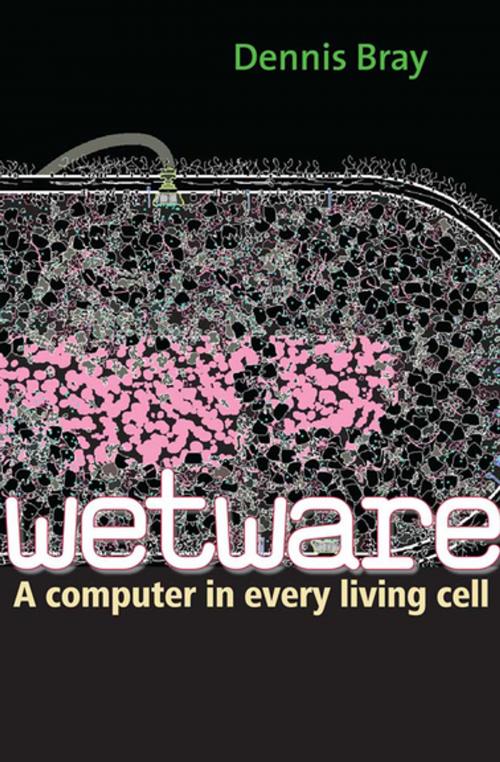Wetware
A Computer in Every Living Cell
Nonfiction, Science & Nature, Science, Biological Sciences, Cytology, Other Sciences, Molecular Biology, Biochemistry| Author: | Dennis Bray | ISBN: | 9780300155440 |
| Publisher: | Yale University Press (Ignition) | Publication: | May 26, 2009 |
| Imprint: | Yale University Press | Language: | English |
| Author: | Dennis Bray |
| ISBN: | 9780300155440 |
| Publisher: | Yale University Press (Ignition) |
| Publication: | May 26, 2009 |
| Imprint: | Yale University Press |
| Language: | English |
“A beautifully written journey into the mechanics of the world of the cell, and even beyond, exploring the analogy with computers in a surprising way” (Denis Noble, author of Dance to the Tune of Life).
How does a single-cell creature, such as an amoeba, lead such a sophisticated life? How does it hunt living prey, respond to lights, sounds, and smells, and display complex sequences of movements without the benefit of a nervous system? This book offers a startling and original answer.
In clear, jargon-free language, Dennis Bray taps the findings from the discipline of systems biology to show that the internal chemistry of living cells is a form of computation. Cells are built out of molecular circuits that perform logical operations, as electronic devices do, but with unique properties. Bray argues that the computational juice of cells provides the basis for all distinctive properties of living systems: it allows organisms to embody in their internal structure an image of the world, and this accounts for their adaptability, responsiveness, and intelligence.
In Wetware, Bray offers imaginative, wide-ranging, and perceptive critiques of robotics and complexity theory, as well as many entertaining and telling anecdotes. For the general reader, the practicing scientist, and all others with an interest in the nature of life, this book is an exciting portal to some of biology’s latest discoveries and ideas.
“Drawing on the similarities between Pac-Man and an amoeba and efforts to model the human brain, this absorbing read shows that biologists and engineers have a lot to learn from working together.” —Discover magazine
“Wetware will get the reader thinking.” —Science magazine
“A beautifully written journey into the mechanics of the world of the cell, and even beyond, exploring the analogy with computers in a surprising way” (Denis Noble, author of Dance to the Tune of Life).
How does a single-cell creature, such as an amoeba, lead such a sophisticated life? How does it hunt living prey, respond to lights, sounds, and smells, and display complex sequences of movements without the benefit of a nervous system? This book offers a startling and original answer.
In clear, jargon-free language, Dennis Bray taps the findings from the discipline of systems biology to show that the internal chemistry of living cells is a form of computation. Cells are built out of molecular circuits that perform logical operations, as electronic devices do, but with unique properties. Bray argues that the computational juice of cells provides the basis for all distinctive properties of living systems: it allows organisms to embody in their internal structure an image of the world, and this accounts for their adaptability, responsiveness, and intelligence.
In Wetware, Bray offers imaginative, wide-ranging, and perceptive critiques of robotics and complexity theory, as well as many entertaining and telling anecdotes. For the general reader, the practicing scientist, and all others with an interest in the nature of life, this book is an exciting portal to some of biology’s latest discoveries and ideas.
“Drawing on the similarities between Pac-Man and an amoeba and efforts to model the human brain, this absorbing read shows that biologists and engineers have a lot to learn from working together.” —Discover magazine
“Wetware will get the reader thinking.” —Science magazine















